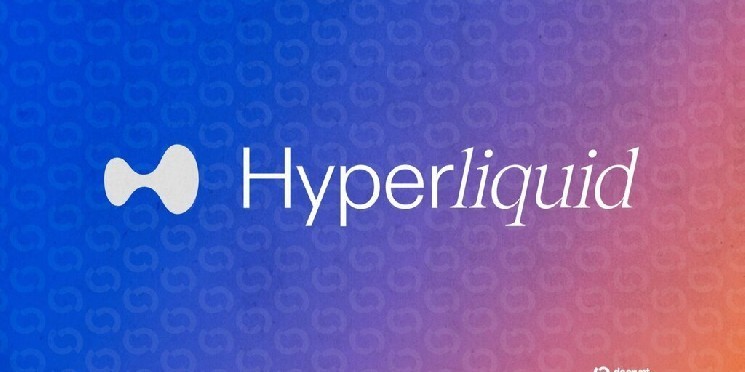Hyperliquid’s USDH Stablecoin Launches as Competition Heats Up in DeFi Trading Market
Native Markets Takes Center Stage with Successful USDH Ticker Bid Amid Industry Competition
In a significant development for the decentralized finance ecosystem, Hyperliquid’s much-anticipated USDH stablecoin officially launched this week, following Native Markets’ successful bid for the coveted ticker. The launch represents a strategic milestone for Hyperliquid’s expanding financial infrastructure, with Native Markets announcing that over $15 million worth of the stablecoin was pre-minted within 24 hours before Wednesday’s official release.
The competitive bidding process for the USDH ticker attracted considerable attention from established financial institutions and crypto-native organizations alike. Earlier this month, Hyperliquid opened proposals for control of the USDH ticker, drawing applications from industry heavyweights including Paxos, Agora, and BlackRock-backed Ethena. However, in a surprising turn of events, Native Markets – a relatively new entity formed mere months before the proposal window opened – secured the winning bid, outmaneuvering more established players in the space.
“The next stage of Hyperliquid’s ascendance will be driven by native stablecoins,” declared Native Markets co-founder Max Fiege in a statement on social media platform X. “We’re honored to be leading the charge with USDH and look forward to showing up for the ecosystem every single day.” This sentiment underscores the strategic importance placed on stablecoin infrastructure within the Hyperliquid ecosystem, positioning USDH as a cornerstone for future development and financial activities on the network.
USDH’s Regulatory Compliance and Revenue Sharing Structure
The Hyperliquid Foundation established clear parameters for the USDH ticker, requiring proposals to demonstrate a “Hyperliquid-first” and “Hyperliquid-aligned” approach. Native Markets distinguished its bid by committing to donate half of all USDH-generated revenues to Hyperliquid’s Assistance Fund, a protocol-driven buy-back mechanism designed to support the broader ecosystem’s growth and stability.
According to Native Markets’ proposal, the USDH stablecoin is backed by a diversified reserve consisting of cash and “U.S. treasury equivalents.” These reserves will be managed by Bridge, a financial platform acquired by global payments giant Stripe in 2024. This arrangement aims to ensure regulatory compliance in both U.S. and European markets – a critical consideration as regulatory scrutiny of digital assets continues to intensify worldwide.
Despite the prestige associated with the USDH ticker, the Hyperliquid Foundation explicitly stated that it would not receive any “special privileges” within the ecosystem. Nevertheless, the intense competition for the ticker highlights its perceived value as a premium designation for a U.S. dollar stablecoin on Hyperliquid’s rapidly expanding network. Notably, prediction markets on Myriad had forecast Native Markets’ victory with 96% confidence three days before the official vote, suggesting informed observers had anticipated this outcome well in advance.
Community Concerns and Market Dynamics
The selection process has not been without controversy. Some members of the Hyperliquid community have raised concerns about potential favoritism, suggesting that Native Markets may have received preferential treatment during the bidding process. Critics pointed to what they perceived as disproportionate consideration given to Native Markets’ proposal by validators, though Native Markets has not publicly addressed these allegations when approached for comment.
USDH’s launch coincides with a pivotal moment for Hyperliquid as it encounters its first significant competitive challenge since its inception. BNB Chain-based decentralized exchange Aster has emerged as a formidable rival, with its token experiencing remarkable growth since its recent launch. According to data from CoinGecko, Aster has temporarily surpassed Hyperliquid in revenue generation, signaling intensifying competition in the decentralized perpetual futures trading space.
Despite this new competitive pressure, Hyperliquid maintains its leadership position in several key metrics. Data from DefiLlama indicates that Hyperliquid continues to outpace Aster in weekly trading volume and overall revenue. Both platforms specialize in decentralized perpetual futures trading, with Hyperliquid having established dominance in this niche until Aster’s recent emergence as a credible challenger.
Market Performance and Future Outlook
The contrasting market performance of these competing platforms reflects the rapidly evolving dynamics within the decentralized derivatives trading sector. Aster’s token has surged approximately 19% over a 24-hour period, reaching $2.31 with a market capitalization approaching $3.8 billion. This impressive performance positions it as the 49th largest cryptocurrency by market capitalization, according to CoinGecko data.
Meanwhile, Hyperliquid’s native token has experienced a more challenging period, declining over 6% during the same timeframe to trade at $44.81. Despite this recent downturn, Hyperliquid maintains a substantial lead in terms of market capitalization at $12.3 billion, securing its position as the 19th largest cryptocurrency. However, the token’s nearly 19% decrease over the past week represents one of the more significant declines among top-tier cryptocurrencies, reflecting market uncertainty about its competitive positioning.
Sentiment among market participants appears to be shifting, with prediction markets on Myriad indicating increasing bearishness regarding HYPE’s short-term price prospects. Approximately 73% of predictors now anticipate the token falling to $39 before it can climb to a new high of $69 – a notable reversal that coincided with Aster’s emergence over the weekend as a serious competitor.
As the decentralized finance landscape continues to evolve, the introduction of USDH represents not just a new stablecoin offering, but a strategic repositioning within a highly competitive market. The ongoing rivalry between Hyperliquid and Aster exemplifies the dynamic nature of the cryptocurrency sector, where established players must continuously innovate to maintain their market leadership against ambitious newcomers. The coming months will likely prove decisive in determining whether Native Markets’ USDH can deliver on its promise of ecosystem alignment and whether Hyperliquid can effectively respond to emerging competitive challenges in the perpetual futures trading arena.














